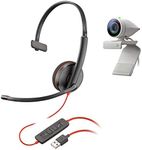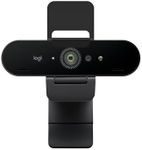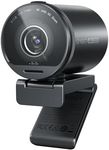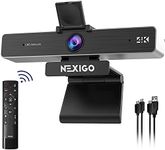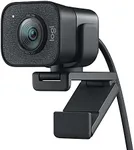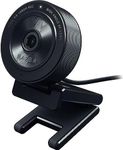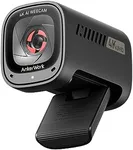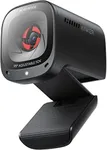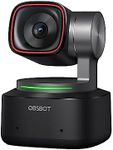Buying Guide for the Best Webcams
Choosing the right webcam can make a big difference in how you appear and sound during video calls, streaming, or recording. The best webcam for you depends on how you plan to use it—whether for casual chats, professional meetings, content creation, or live streaming. Understanding the key features will help you find a webcam that matches your needs and ensures a smooth, clear, and reliable experience.ResolutionResolution refers to the number of pixels the webcam can capture, which affects how clear and sharp your video looks. Common resolutions include 720p (HD), 1080p (Full HD), and 4K (Ultra HD). For basic video calls, 720p is usually enough, but if you want a crisper image for professional meetings or content creation, 1080p is a good standard. 4K webcams offer the highest clarity, but are mainly useful for high-quality streaming or recording. Think about how important image sharpness is for your use—if you just need to be seen clearly, 1080p is a safe bet for most people.
Frame RateFrame rate, measured in frames per second (fps), determines how smooth your video appears. Most webcams offer 30fps, which is fine for regular calls and meetings. Some models provide 60fps, which makes motion look smoother and is preferred for streaming or recording fast movements. If you plan to use your webcam for gaming streams or action-heavy content, look for higher frame rates. For everyday use, 30fps is usually sufficient.
Field of View (FOV)Field of view describes how much of the scene the webcam can capture, measured in degrees. A narrow FOV (around 60-70°) focuses more on your face, while a wide FOV (up to 90° or more) can show more of your surroundings or include multiple people. If you want privacy or just need to show yourself, a narrower FOV is better. For group calls or if you want to show more of your room, a wider FOV is helpful. Consider your typical setup and how much background you want visible.
Autofocus and Low-Light PerformanceAutofocus helps keep your image sharp even if you move around, while good low-light performance ensures you look clear in dim rooms. Some webcams have fixed focus, which is fine if you stay in one spot, but autofocus is better if you move or want to show objects up close. If you often use your webcam in rooms with less light, look for models that mention low-light correction or enhanced sensors. Your environment and how much you move should guide your choice here.
Microphone QualityMany webcams include built-in microphones, which can be convenient if you don’t have a separate mic. The quality can vary—some have noise reduction to help your voice sound clearer. If you’re in a quiet space, most built-in mics will do, but for noisy environments or professional use, look for webcams with stereo or dual microphones. If audio quality is very important, you might still want to use a dedicated microphone.
Mounting and AdjustabilityHow you can attach and position your webcam matters for comfort and the best angle. Most webcams clip onto monitors, but some offer tripods or flexible mounts. If you use a laptop, a simple clip might be enough. For more control over your camera angle or if you want to use it away from your screen, look for adjustable mounts or tripod compatibility. Think about your workspace and how you want to set up your webcam.
Compatibility and ConnectivityWebcams usually connect via USB and should work with most computers, but it’s good to check compatibility with your operating system and preferred video apps. Some webcams offer plug-and-play simplicity, while others may need drivers or software for extra features. If you want to use your webcam with different devices or operating systems, make sure it’s widely compatible. Consider how easy you want setup to be and what devices you’ll use.


